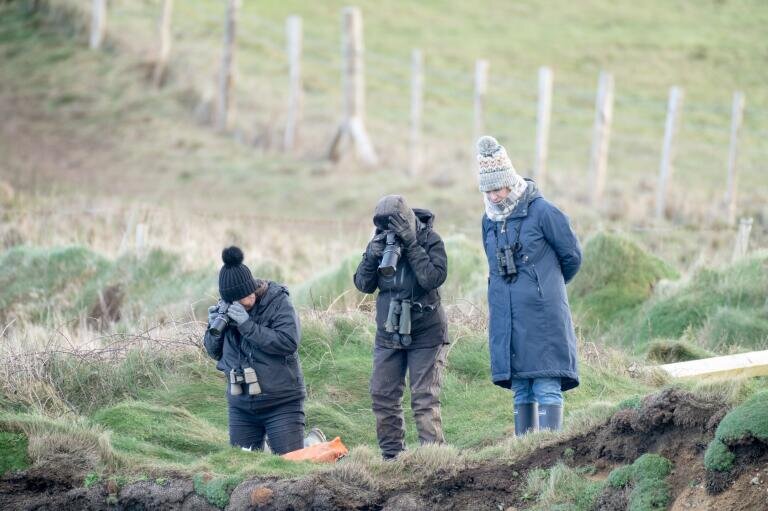
Where can I see seals in the Wild?
We are lucky to have between 38% of the entire world’s population of grey seals and 30% of the European subspecies of common seals in the UK, but these hugely charismatic animals face huge challenges.
Unlike most other marine megafauna, seals have a terrestrial habit. They can be seen all year round at established sites across the country. Their predictability makes seals particularly vulnerable when people know where and when to spot them.
As the UK’s most reliably sighted marine mammal, seals are a dependable species for our burgeoning commercial wildlife spotting sector. Seals provide environmental ecosystem services, enhance social health and wellbeing, as well as diversifying coastal economies for local communities.
Ironically, all this human interest can cause seals unnecessary distress and injury. For example, August 2020 was the worst August on record for seal disturbances in Cornwall as people flocked to the coast between lockdowns. 150 seals were seriously disturbed into stampeding or tombstoning into the sea in a single county in that one month alone.
But there are ways to admire these beautiful creatures whilst having minimal impact. It’s crucial to always keep your distance, so take binoculars and a camera with a good zoom lens if you’re set on taking photographs. Seals always need space, especially if they’re on land where they rest, digest, replenish oxygen supplies, socialise and have their pups.
If mums are feeding pups, getting too close will scare mum off and the pup will miss a crucial feed. Every feed counts for a pup in its race to build up enough fat reserves in the autumn to tide itself over the time it takes to learn to feed in the winter.
Juveniles and adults always risk injury as they panic and rush back to sea – even sand grazes their flippers.
Aim to stay quiet, downwind and out of sight. Good wildlife fieldcraft reaps rewards with the best views of natural wild behaviour. Needless to say, never try and feed wild seals, keep dogs on leads and take everything home with you.
As for where to go…do your homework well in advance.
Consider the environment carefully before you set off. Many wild, remote sites are vulnerable to human impact because they are less managed. Many of these delicate habitats struggle to cope with damage caused by visitor footfall alone, and that’s before you look at the disturbance impact it has on the seals.
Consider visiting locations where visitors numbers are self-limiting, such as on guided trips with highly knowledgeable, experienced and long-established Wildlife Safe Scheme accredited operators to offshore islands around the UK.
Ask the operator about how they minimise any disturbance before you book.
Alternatively, look to sites which have implemented good mitigation management, such as the systems operated by local community volunteer groups or charities. Stick to the paths and viewing areas they have created and always follow the advice given on site. For information on how to spot seals responsibly find out about local community based regional seal conservation groups such as those in the Seal Alliance.
If you visit a sensitive seal site with minimal visitor management, please be EXTRA careful and try to consider the following:
On Land:
Stay on clifftops or in dunes. Avoid walking on seal beaches and discourage others from doing so.
On The Water:
If you spot seals on rocks or beaches give them an extra wide berth – even more so if the seals are high above the water line.
From The Air:
Avoid flying anything anywhere near a seal site.
Please aim to be a role model of best seal friendly practice and share this knowledge with those around you!
Download and share the posters linked here to help others learn how to minimise their disturbance to seals (and other coastal wildlife too)




